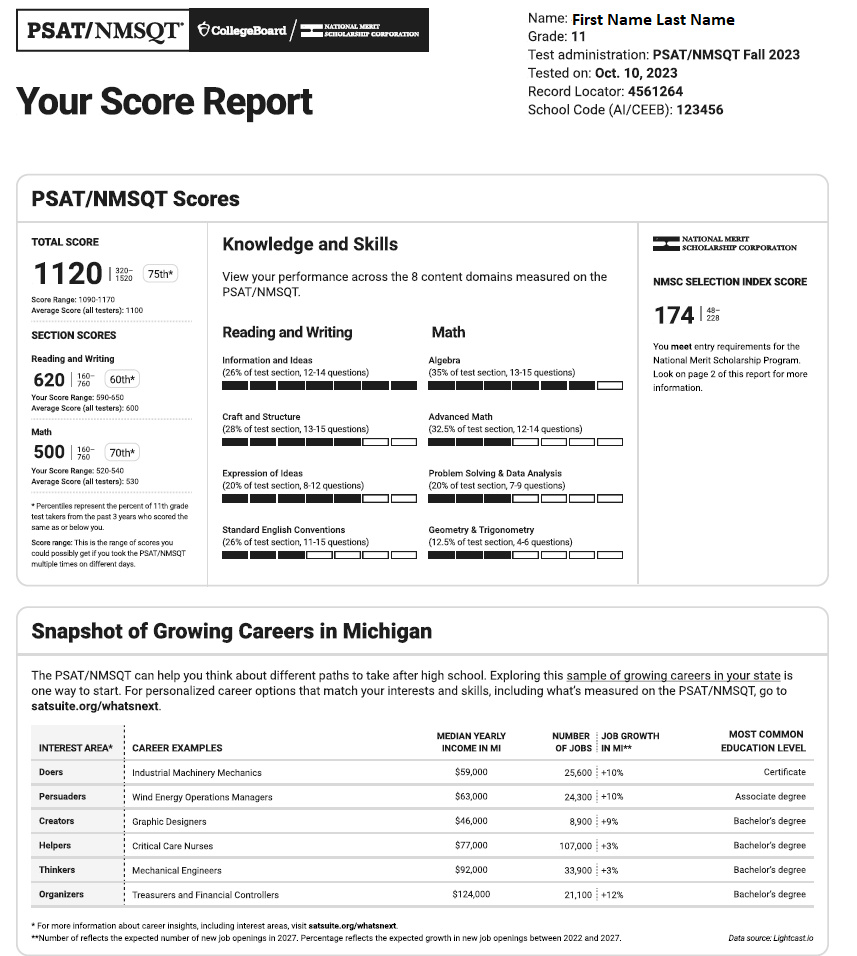Students starting a new school year often focus on beginnings—creating routines, initiating friendships, and starting classes. Beginnings are also an opportunity for students to think about where they’re heading. For most it’s toward a future career they’ll love.
As we think about beginnings, discovery is a critical first step. At a time when we’re inundated with information, students’ career ambitions should extend beyond what they see in their home, community, or school. They should be driven by the discovery of what’s possible.
But not every student has the support, exposure, and information to imagine their options. This is compounded by a rapidly changing workforce, where, according to the World Economic Forum, 65% of children entering primary school today will end up working in jobs that don’t even exist yet.
Given these realities, students who rule out possible career identities early on may struggle to create a plan that sets them up for future success. In fact, while 70% of future jobs will require skill development beyond what K–12 traditionally offers, our research shows that only 20% of students say they’ve heard much information about non-college pathways.
At College Board, we see career success as the destination and education as the pathway to achieve it.
Students need a comprehensive look at career opportunities and pathways to them—including two- and four-year college, apprenticeship, job or skills training, military service, or direct entry into the workforce. Quality tools and resources can expose them to options, help them create a plan, and provide experiences that accelerate them forward. Access alone is not enough. The tools should reflect the career landscape and evolve with students to support them as their self-efficacy grows.
That’s why this fall we’re having the conversation with 3 million students, starting as early as eighth grade.
Imagine the moment when students receive their standardized test score report. For students thinking about college, it ignites the future planning journey. Now replay that moment for students who, whatever their career aspirations, may not start in a four-year program. How can that moment ignite future planning for all pathways?

Next month, when students open their PSAT/NMSQT® and PSAT™ 8/9 score report, it will ignite such planning. Career Insights is a new score report feature that lists six in-demand careers in a test taker’s state. The list uses information from O*NET, the nation’s primary source for occupational information, and Lightcast, the leader in real-time labor market data.
The expanded score report is just one element of the career exploration process, aiming to build transparency around workforce opportunities and spark planning discussions sooner.
After completing the digital PSAT/NMSQT and PSAT™ 8/9, every test taker can:
- Join the career conversation. The score report is an opportunity to think about career exploration. Regardless of their score, students in the same state will see the same list of six careers, including information on growing opportunities with strong starting salaries. Careers will span interest types aligned to the RIASEC model, like doers versus creators, show growth over five years, and the most common level of education.
- Find a starting point. Career exploration is continuous, and the score report creates a path to more information. Students can use BigFuture® career navigation tools for free, quality information to discover more about the six careers or others. With 1,000 careers listed and information on median salary, recommended education, job growth, and more, it’s a starting point to more possibilities.
- Make it personalized. If students want career options personalized by their likes and dislikes, not only based on location, they can take a free career quiz on BigFuture accessed by 1 million students. It matches career suggestions within minutes to their skills, interests, and values and lets students save careers that interested them to a list on BigFuture.
This is just the beginning. The score report for the spring 2024 PSAT™ 10 and SAT® will show students how their performance can help inform career options. A student’s math, reading, and writing skills will be aligned with the typical level associated with various careers. This is another opportunity to provide students with critical information as they set goals and plan.
We know planning for what’s next is complex. This school year, you can leverage Career Insights to start a conversation with students early and help them take a meaningful first step forward.
Sponsored Content Disclaimer:
Sponsored Content in Partnership With NASSP
NASSP allows select groups to share information and thought leadership with our program audiences.

